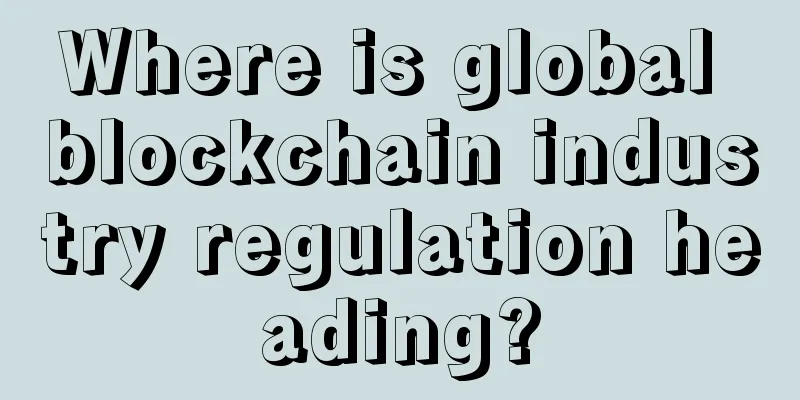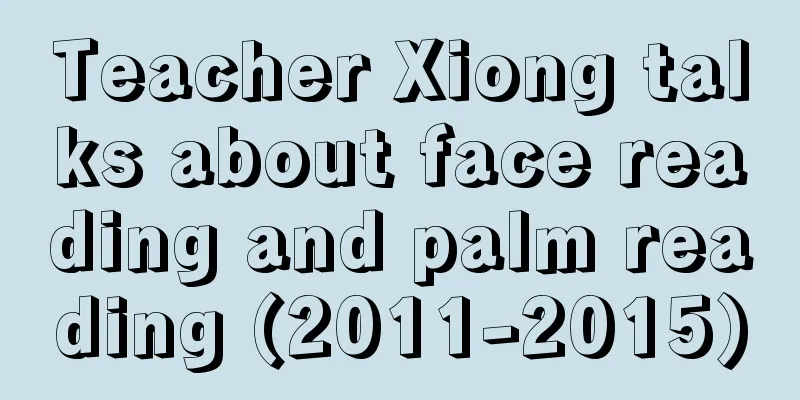Where is global blockchain industry regulation heading?

|
The outbreak of the COVID-19 pandemic in 2020 once brought global economic development to a bottleneck. Whether it is end-to-end, person-to-person, or industry-to-industry, the demand for economic efficiency and transparency has been infinitely magnified. The advantages of blockchain, "dispersion, decentralization, and security", allow this technology to take the lead in demonstrating its strength in the global medical system, supply chain network, and financial system. Although with the continuous upgrading and exploration of blockchain technology and business models, the application of technology has expanded to a wider range of fields, crypto assets still account for 37% of the global blockchain application field distribution. Source: iiMedia Research Therefore, people's focus on blockchain technology is still on encrypted assets. At the 158th Force Open Day, IPFS Force Zone researcher Yu Zhi shared with everyone the latest developments in blockchain and crypto assets in the global field. 1) The COVID-19 pandemic has had an impact on the economy, and crypto assets have become a safe haven The Biden administration implemented a $1.9 trillion economic stimulus plan, the "American Rescue Plan" As governments around the world began to "flood the market" during the COVID-19 pandemic, the new US President Biden launched a $1.9 trillion economic stimulus plan, known as the "American Rescue Plan." This has raised concerns about the health of the financial sector and prompted people to turn to crypto assets for risk aversion. 2) Financial investment institutions are entering the crypto asset field in large numbers Given the current economic situation in the United States and other countries, institutional investors, hedge funds and other mature financial investment institutions have entered the crypto field one after another. As more mainstream investors and service providers join the crypto industry, the application scope of crypto assets will be further expanded. Business intelligence company MicroStrategy (MSTR) has acquired crypto assets worth more than $1 billion, and large international investment bank Morgan Stanley has further increased its holdings in MSTR, thereby realizing and expanding indirect investment in crypto assets. In the past two weeks, Grayscale Bitcoin Trust has increased its holdings by nearly 40,000 bitcoins, and its current holdings are worth more than $20 billion. Global payment giant PayPal announced that it will provide crypto asset custody and payment support through specific suppliers using the platform. Considering that the platform has more than 340 million users worldwide, this move will truly bring cryptocurrency into the mainstream. In addition, Paypal has become the actual controller of China's third-party payment institution Guofubao in 2019, becoming the first foreign payment institution to enter China. Square, the mobile payment company founded by Twitter founder Jack Dorsey, supported Bitcoin payments as early as 2014 and purchased 4,709 Bitcoins for $50 million in October last year. 3) The Economist magazine and the Bitcoin price surge published an article commenting: In response to the current international economic situation and the crypto industry boom, the British magazine The Economist published a special article in its January 2021 issue to comment on Bitcoin, stating: “The current Bitcoin fever is noteworthy because it is no longer fueled by basement libertarians, but also by some of Wall Street’s most prominent companies that have been relatively cautious and on the sidelines.” The article also states that the United States's accumulated debt is partly responsible for the sudden increase in the new attraction of crypto assets. For the future development of Bitcoin, the article gives corresponding suggestions: it is hoped that Bitcoin will "reconcile" with regulators and improve its global trading liquidity in order to find a more moderate role for itself in the global monetary system. 4) The new US Treasury Secretary intends to establish an effective regulatory framework for financial innovation Janet Yellen, the new U.S. Treasury Secretary, attended the Senate confirmation hearing for the U.S. Treasury Secretary on January 19. She said: "Crypto assets are a particular concern. I think many transactions, at least in the sense of transactions, are primarily used for illicit financing, and we really need to look at ways to reduce their use and ensure that illegal activities are not carried out through these channels." US media predicts that crypto assets may be subject to renewed regulatory scrutiny in the next four years. 5) Central Bank Digital Currency At present, the central bank's digital currency DCEP is being piloted in many places. In April last year, Shenzhen, Suzhou, Xiongan New Area, Chengdu and the future Winter Olympics scene were all conducting internal closed pilot tests. Didi, Meituan, Bilibili, ByteDance and other technology companies have actively promoted participation in digital currency cooperation. Recently, Shanghai, Guangdong, Shenzhen, and Beijing have also officially announced pilot projects to enrich application scenarios. At present, in terms of speed and technical strength, China leads the world in issuing digital legal tender. Compared with China, the Russian government has required officials to be transparent about their crypto assets and has imposed varying degrees of restrictions on officials holding crypto assets. At the same time, Russia's largest state-owned commercial bank, Sberbank, plans to launch the cryptocurrency Sbercoin this spring, and the project has been approved by the Russian Central Bank.
|
<<: Grayscale has registered 6 new trust entities, including AAVE, ATOM, DOT and other projects
>>: Filecoin Community Highlights: Slate
Recommend
Is Bitcoin a US conspiracy?
Musk supports the platform, Wall Street is buying...
The influence of hair on personality and luck
The influence of hair on personality and luck 1. ...
ETH continues to surge, BCH has ambush potential
Author | Hashipi Analysis TeamReview: DEFI curren...
Traditional institutions are accelerating their entry into cryptocurrency, is spring coming?
At the beginning of 2020, cryptocurrency ushered ...
What are the characteristics of an emperor?
What are the characteristics of an emperor? Large...
Nose dominates fortune
1. Look at the nose The tip of the nose is called...
Mining Trojans are rampant, 360 Security Browser launches "Mining Protection" feature
Among the countless myths of wealth creation, Bit...
Australian Craig Wright: I am Satoshi Nakamoto
The British Broadcasting Corporation BBC reported...
A face that can think calmly when in trouble
When faced with difficulties, most people will be...
[Market Analysis] Bitcoin support rebounds-British issues drive the bull market back
Recent new problems in the UK financial sector ha...
Is it good to have a black mole on the back of the neck? What does a mole in the middle of the back of the neck mean?
Is it good for a woman to have a mole on her neck...
What does a mole on the left corner of the mouth mean?
The positions of different moles have different i...
Vitalik Buterin: Ethereum issuance is unlimited for security reasons
Ethereum co-founder Vitalik Buterin explains the ...
BlocBox, the world's first blockchain protocol for the maritime industry
Singapore, October 14, 2019 – BlocBox, a Singapor...
How to tell if a person has a protruding mouth?
In physiognomy, every subtle feature of the face ...









